An Earth when there were no fish, no dinosaurs, and no humans. It was a very, very long time ago, before even the famous Cambrian Explosion. During this ancient period, a group of mysterious creatures lived in the oceans. These are known as the Ediacaran biota.
Understanding Ediacaran biota helps us learn about the very first large, complex life forms on our planet. These strange beings were unlike almost anything alive today, and their features tell us a lot about early evolution.
Don’t Miss This!
After reading, challenge yourself with our interactive quiz at the end. Click here to take the Quiz
Index
What are Ediacaran Biota?
The Ediacaran biota were a group of soft-bodied organisms. They lived on Earth between about 635 and 541 million years ago. This time is called the Ediacaran Period, named after the Ediacara Hills in Australia where many fossils were first found. These creatures represent some of the earliest known complex, multicellular life forms on our planet. They were not just single cells, but made of many cells working together.
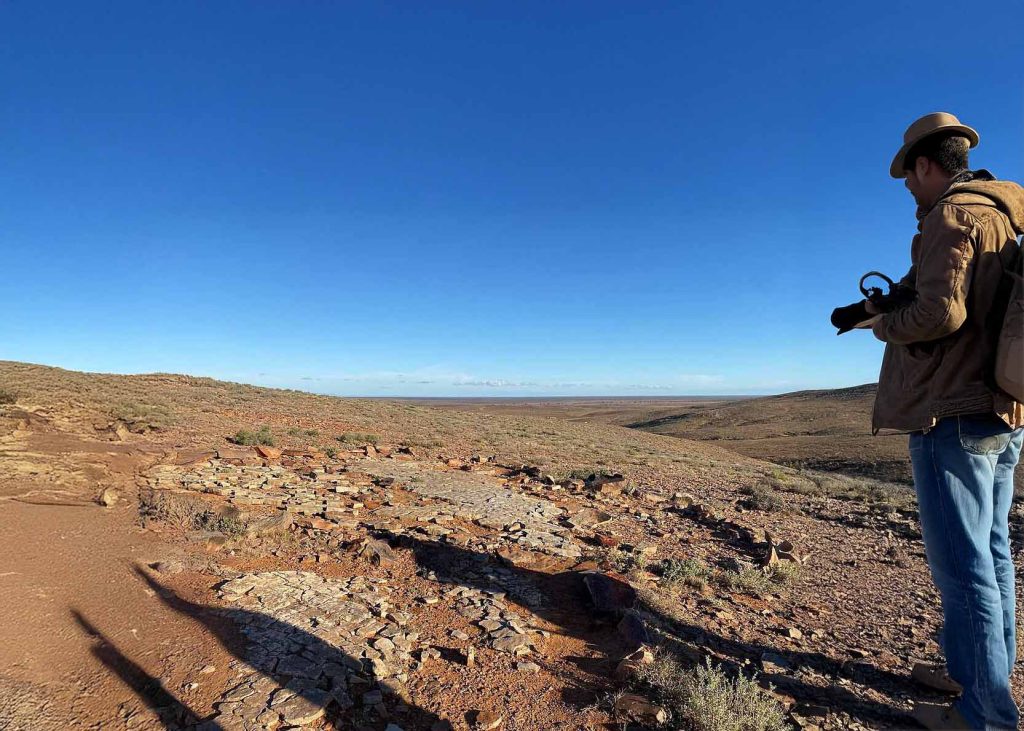
Scientists are still trying to figure out exactly what these organisms were. They don’t fit neatly into modern animal groups like jellyfish or worms. Their unique body plans make them a puzzle for paleontologists. Studying their fossils helps us piece together the story of life’s beginnings.
Where Did They Live?
The Ediacaran biota lived in the oceans. They were found all over the world, from Australia to Russia and North America. Most of them lived on the seafloor, often attached to the bottom or lying flat on the muddy sediments. The oceans back then were very different from today’s oceans. They were likely calmer and had less oxygen in some areas.
These ancient seas were also free from large predators. There were no animals with hard shells or sharp teeth yet. This peaceful environment allowed these soft-bodied creatures to grow without being eaten. Their widespread presence shows they were successful for millions of years.
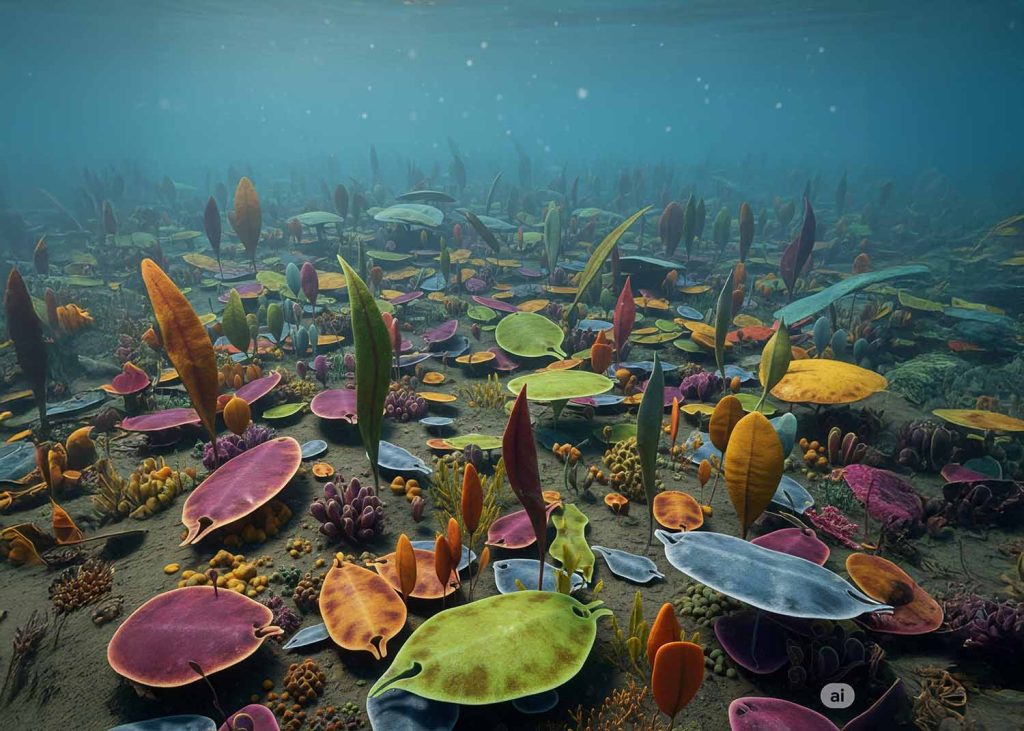
Strange Shapes and Sizes
One of the most fascinating Ediacaran biota characteristics is their unusual shapes. Many looked like:
- Quilted mattresses (like Dickinsonia)
- Fronds (like Charnia)
- Discs
- Long, segmented worms (like Spriggina)
- Simple bags or tubes
They ranged in size from a few millimeters to over a meter long. This variety in form is truly remarkable.
For example, Dickinsonia looked like a flat, oval-shaped mat with ribbed segments. Spriggina was more worm-like, with a head and body segments. Charnia resembled a fern frond, attached to the seafloor by a stalk. These unique body plans are part of what makes them so mysterious to scientists.
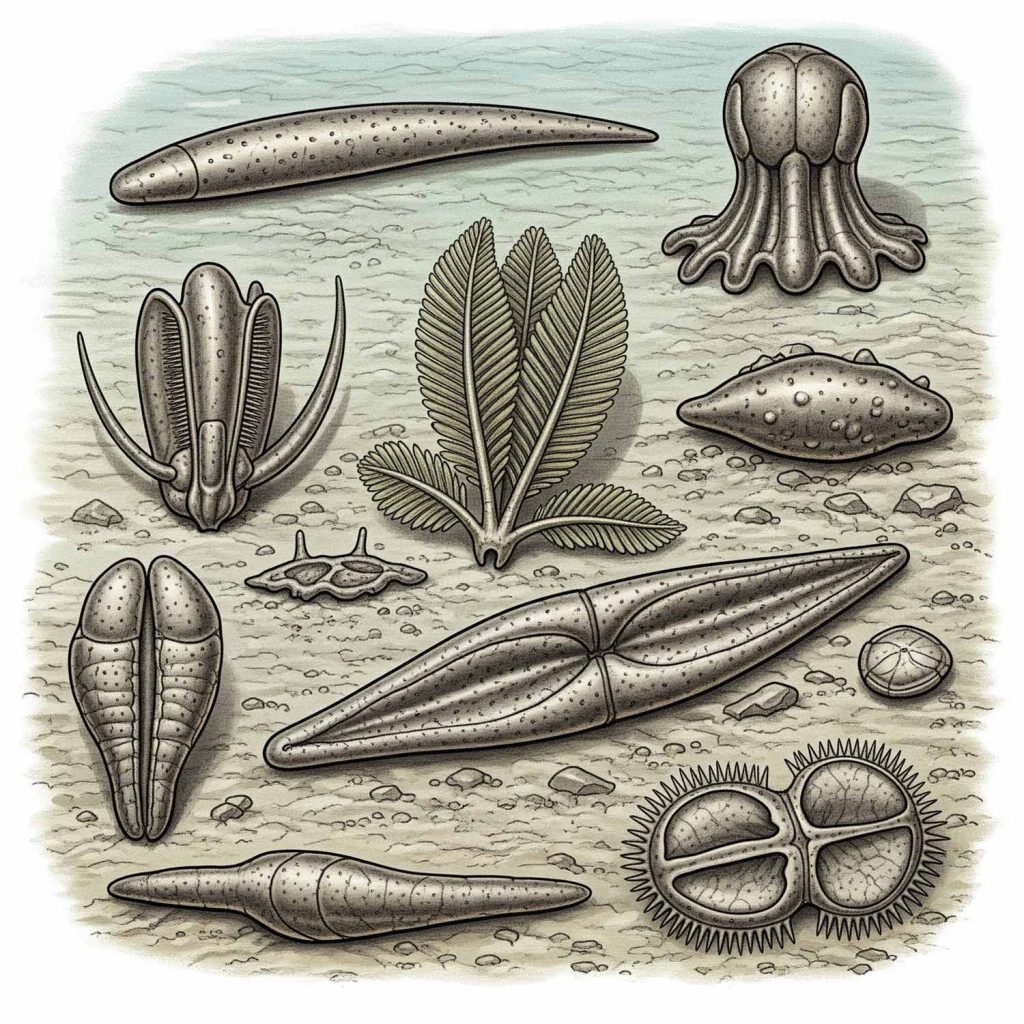
How Did They Live? (Feeding and Movement)
Scientists believe many Ediacaran biota obtained food in simple ways:
- Direct Absorption: Many likely absorbed nutrients directly from the water. They might have had a large surface area to soak up dissolved food. This is different from how most animals eat today.
- Filter Feeding: Some might have filtered tiny particles from the water.
Movement was also very limited for many of these creatures:
- Sessile: Many were sessile, meaning they stayed in one place, attached to the seafloor.
- Slow Gliding: Others could slide slowly across the sediment, leaving behind faint tracks.
They did not have complex muscles or nervous systems like modern animals. Their simple ways of living are key Ediacaran biota characteristics.
“The Ediacaran biota represent a unique experiment in multicellularity, a time when life explored forms and functions that are largely absent from the modern world.” – Dr. Mary Droser, Paleontologist
Failed Experiment
One of the biggest puzzles about the Ediacaran biota is how they relate to modern life. Some scientists think they were early ancestors of modern animals. Others believe they were a completely separate branch of life that died out. This idea is called the “failed experiment” hypothesis. They might have been part of a different “kingdom” of life entirely.
These ancient organisms, with their simple body plans and lack of clear mouths or digestive systems, don’t fit neatly into the categories of animals, plants, or fungi. This makes their classification difficult for scientists. However, new fossil discoveries and advanced imaging techniques are continuously helping researchers learn more about these enigmatic life forms and their place in Earth’s early history.
Why Did They Disappear?
The Ediacaran biota disappeared around 541 million years ago. This happened just before the Cambrian Explosion, a time when many new animal groups appeared. Scientists are not entirely sure why they vanished. Several ideas exist to explain their disappearance. It might have been a combination of factors.
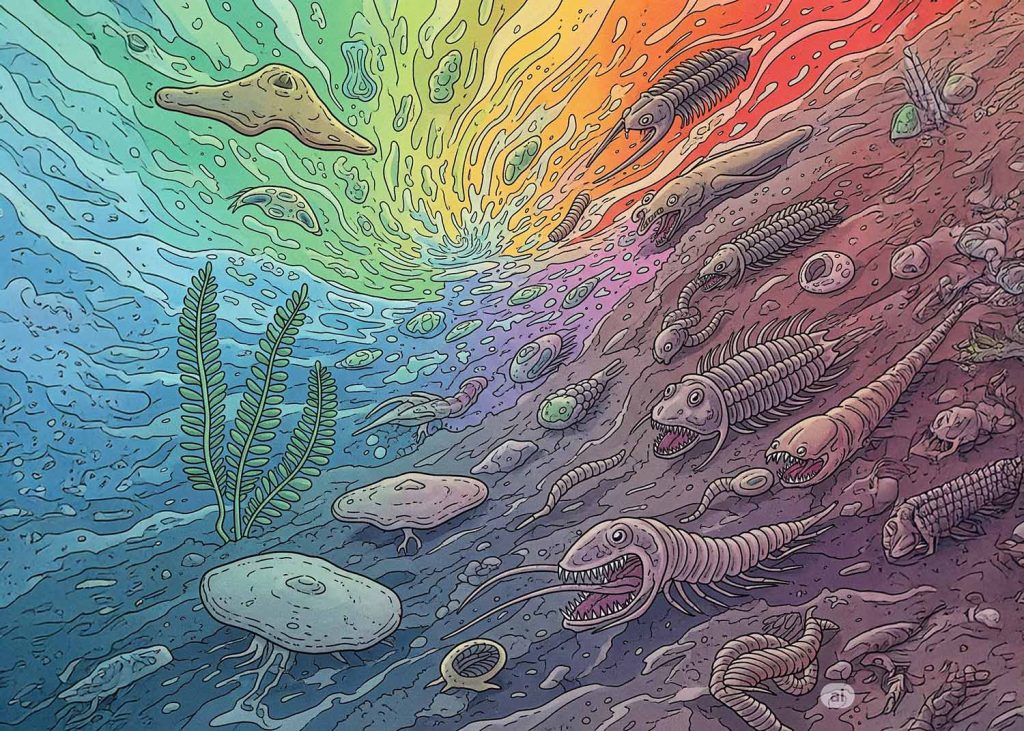
One idea is that the rise of new, more complex animals in the Cambrian Period outcompeted them. These new animals had mouths, guts, and could move faster. They might have eaten the Ediacaran biota or taken over their food sources. Changes in ocean chemistry or oxygen levels could also have played a role. Understanding their end helps us understand the beginning of new life forms.
Paving the Way for New Life
Even though the Ediacaran biota disappeared, they left an important lesson. They acted as a proof of the consept that large, complex, multicellular life could exist. Their existence showed that life was ready to move beyond simple single-celled forms. They were the pioneers of complex life on Earth.
The Ediacaran Period was a crucial step in the history of life. It demonstrated the potential for diverse body plans and ecological strategies. Without these early experiments, the explosion of life in the Cambrian Period might not have happened. They were a vital part of Earth’s evolutionary journey. To learn more about the next big step in life’s history, you can read about the Cambrian Explosion.
Ediacaran Biota Characteristics Quiz
Test your knowledge about Earth’s earliest complex life!

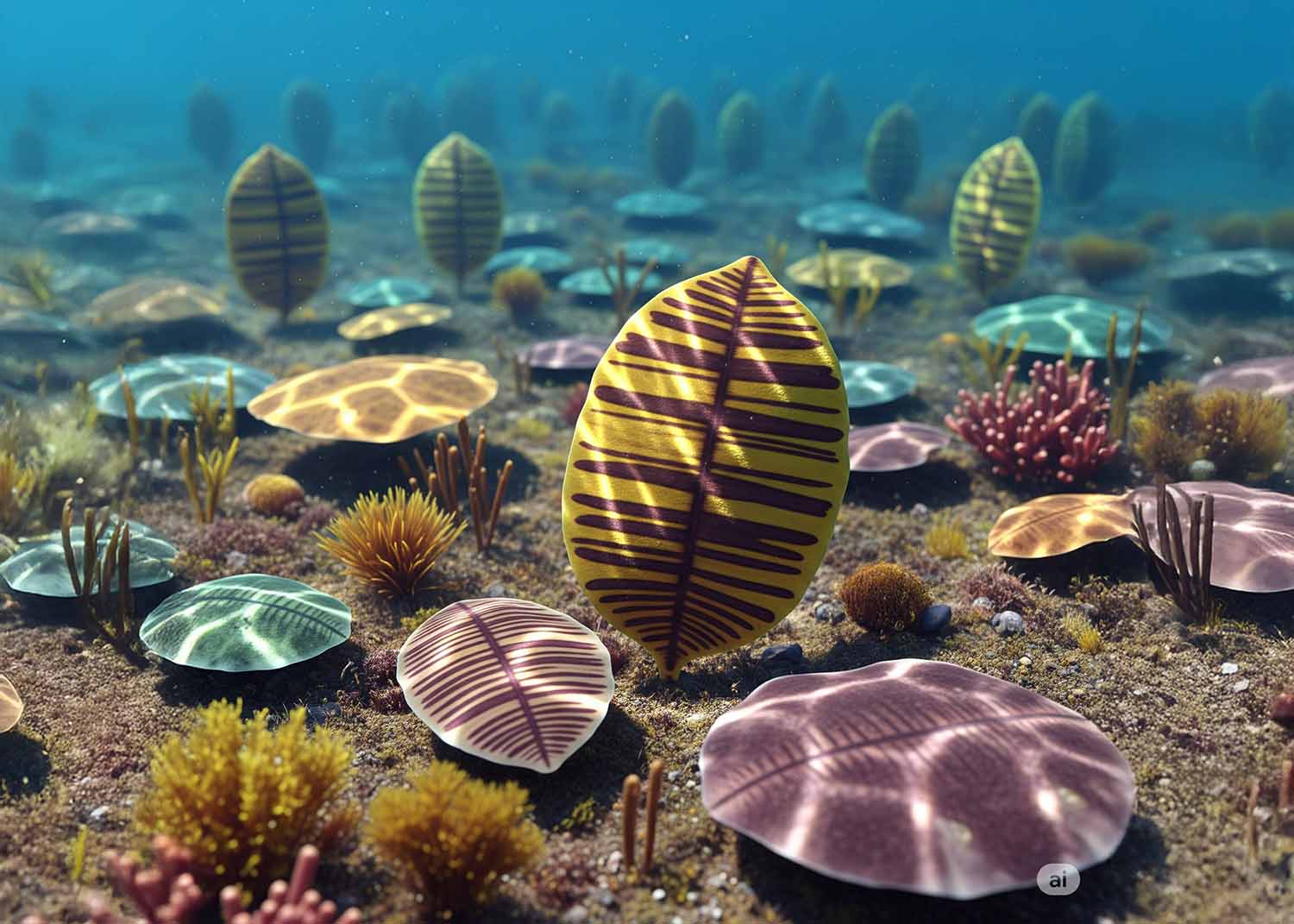
Leave a Reply